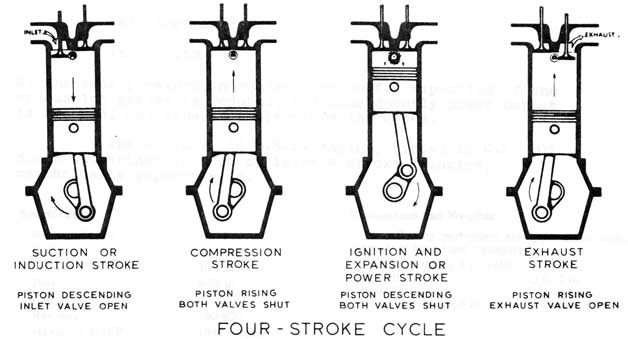
1. As the inlet valve opens, the piston moves down the cylinder and a mixture of air and fuel, or just air in the case of a diesel engine, is drawn into the cylinder via the inlet port until the piston reaches the bottom of its travel within the cylinder (bottom dead centre) or BDC. This is referred to as the induction stoke.
2. With the inlet valve now closed, the piston will now begin to move back up its cylinder, compressing the charge in the process. as the piston nears the top of its travel, the mixture is now in a highly compressed state and at an extremely high temperature. This is referred to as the compression stroke
3. With the piston now at, or a few degrees before or after its highest point (top dead centre) or TDC, the mixture is now ignited by a spark, in the case of a petrol engine or by heat of the compressed air in a diesel (diesel engines have much higher compression ratios than their petrol counterparts due to diesel fuel being less flammable and in the absence of a spark) causing an explosion, which creates the engines power, hence this is referred to as the power stroke.
4. As the piston reaches its lowest point once again and starts to work its way back up, the exhaust valve is now open and the burnt gases which are a result of combustion will begin to exit the cylinder and follow on to the exhaust system. When the piston reaches the top of its travel, all of the gases will have been expelled from the cylinder and the exhaust valve is now closed. This is referred to as the exhaust stroke.
Although this cycle of operations generally refer to petrol (spark-ignition or S.I engines), the four-stroke cycle is very similar for diesel or compression-ignition (C.I) engines although there is a very brief break between the time from which the fuel is injected into the cylinder and that of when it is ignited by the heat of the corresponding compressed air. This is known as the "Delay Period"
It must be noted that only on the power stroke is any real work being done as there is no power being produced on any of the other three strokes. For this reason, the flywheel must assist in keeping the
engine turning over and also for smooth running in between strokes.
No comments:
Post a Comment